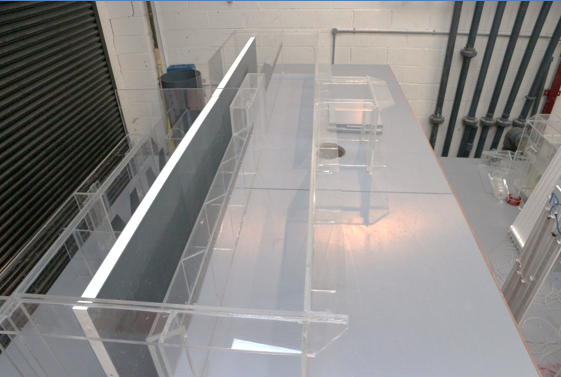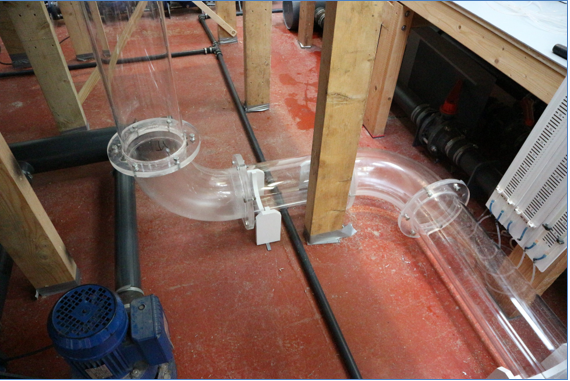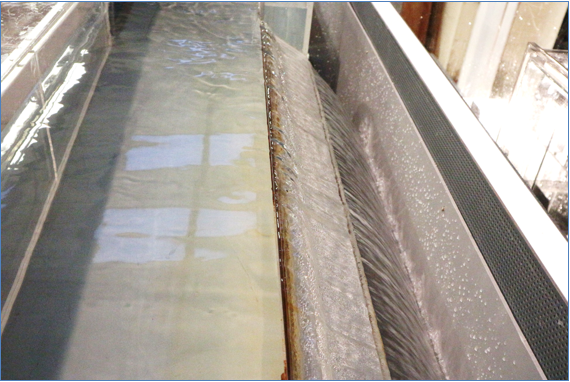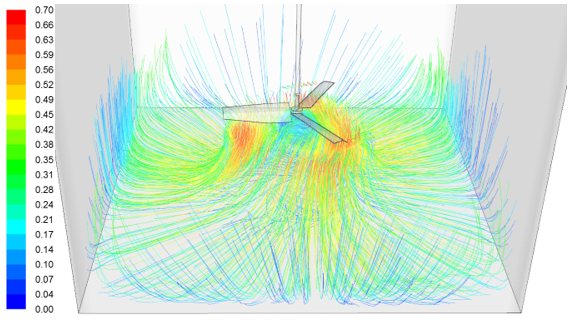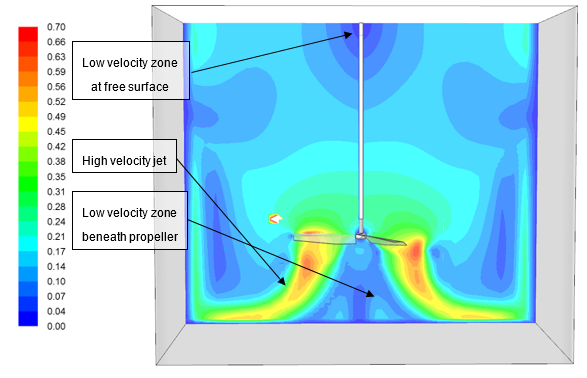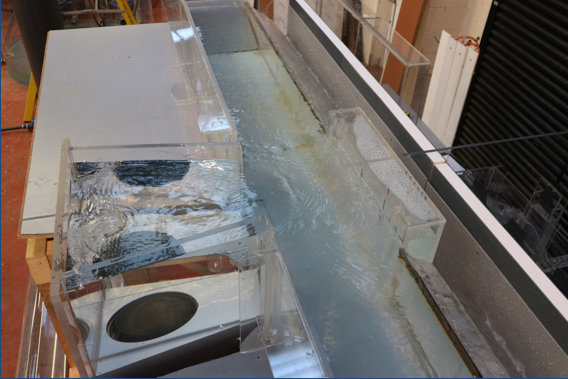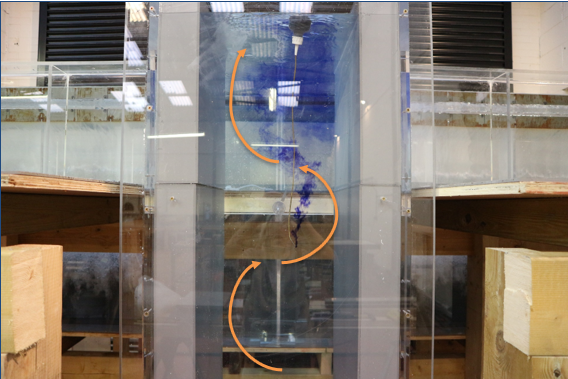Keleher Flocculator Inlet
Client: Pick EverardScale: 1/3
This summary covers a physical hydraulic model study of the Keleher WTW Flocculator Inlet and a CFD study on the flocculator performance. The physical model was constructed to 1/3rd full scale and operated on Froude Law similarity.
Physical modelling studied seven arrangements of the inlet chamber to the flocculator tanks. The modelling demonstrated that Arrangement Four provided the best flow distribution between the two flocculator weirs, with the exception of Arrangement Seven. However, Arrangement Seven resulted in major detrimental effects to the flow distribution along the individual weir lengths and was subsequently discounted. Arrangement Four was therefore selected to offer the maximum attainable improvement in flow distribution within the constraints imposed.
The physical modelling of Arrangement Four of the inlet chamber showed that at peak flow the difference in flow between the left and right flocculators was 11.81 l/s, i.e. 4.03 %. Model testing determined that there was even flow distribution over the two individual weir lengths. Low velocity areas were identified at the downstream ends of the weir channels under the initial testing scenario. Infill benching was proposed to remove these low velocity zones. This infill did not result in any influence on the flow distribution along the weir lengths, with a maximum measured discrepancy from minimum to maximum value head on the weirs of 5 mm.
The testing programme included both normal modes of operation and maintenance scenarios. No major adverse effects were observed under any operating condition tested.
The CFD model determined that there was evidence of some recirculation and short circuiting. There were four distinct areas of low velocity; these were located beneath the flocculator propeller hubs, and local to the inlet and outlet boundary walls. Infill was proposed to mitigate against the zones of low velocity local to the upstand walls, hence preventing potential deposition of light organic solids in these areas.








